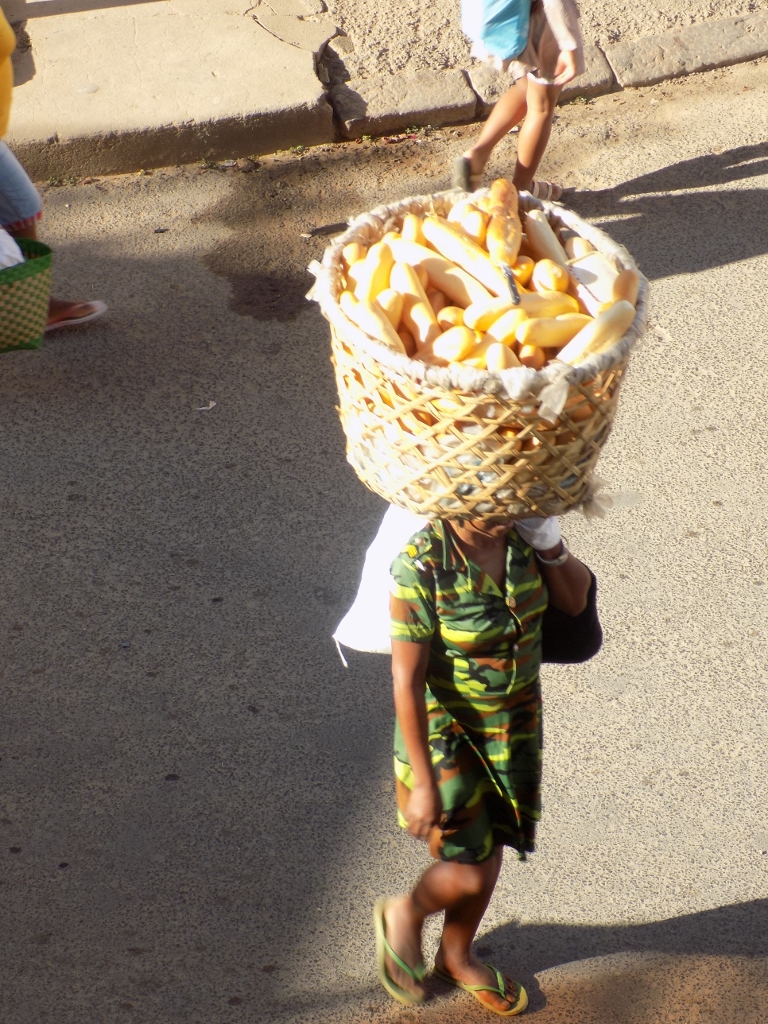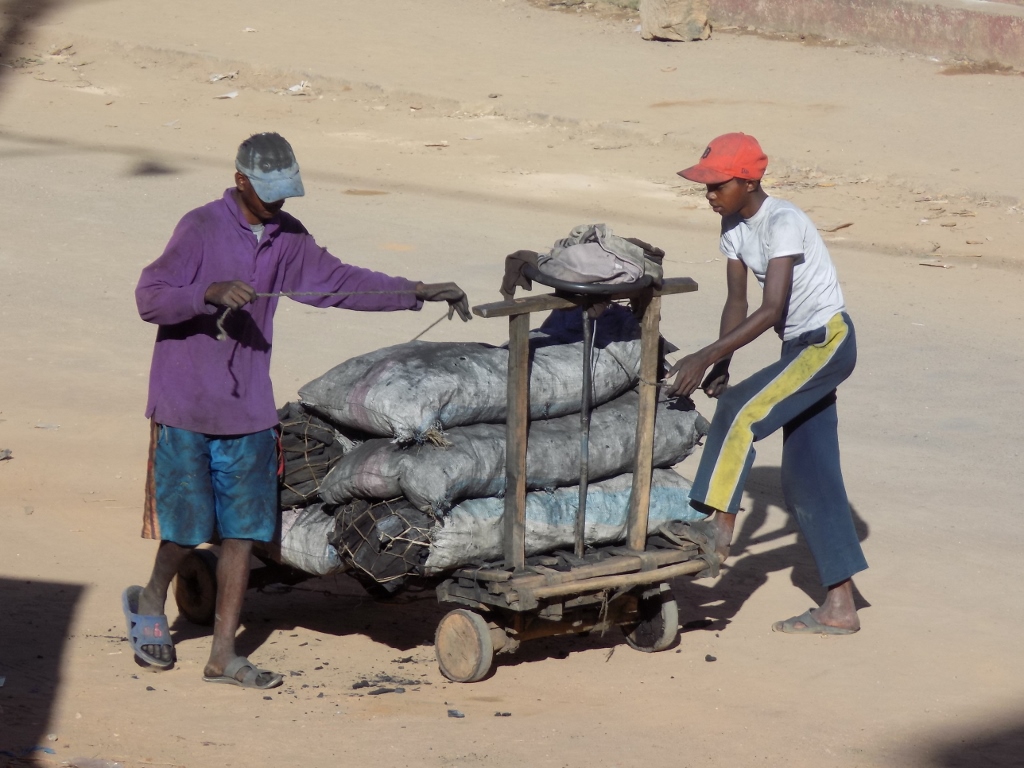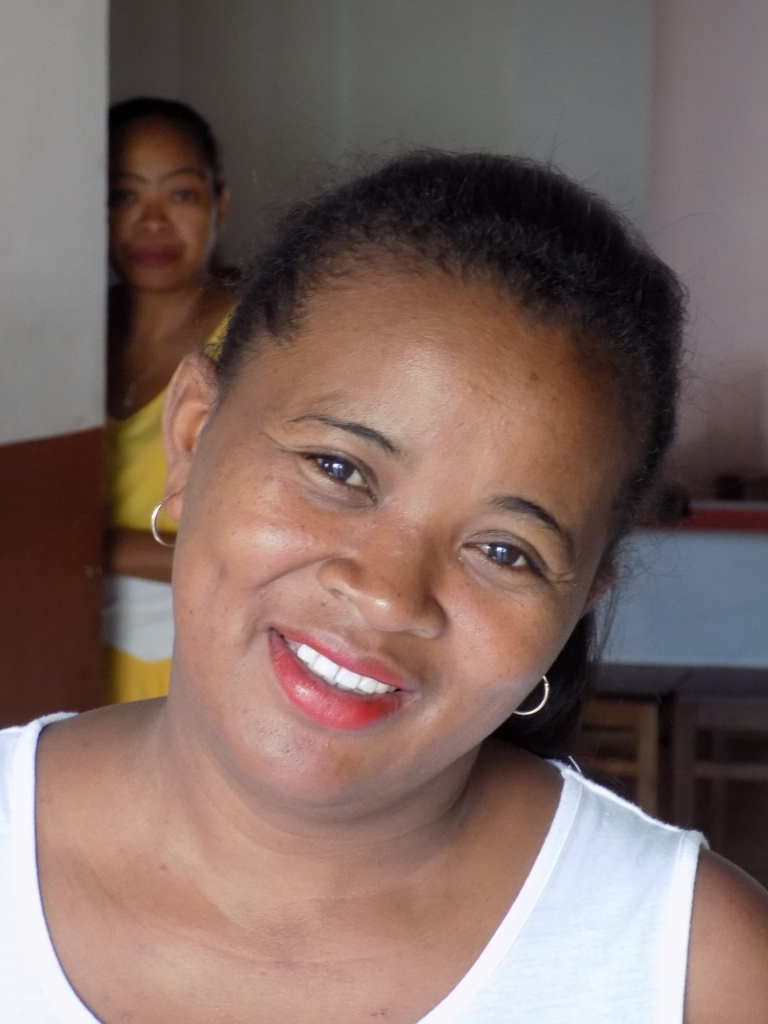Madagascar 2020, part 11 (Fianarantsoa, Ambalavao, Anja Reserve)
Town Fianarantsoa on Madagascar was founded in 1830 and it is marked by some specificities. To start with, nowadays it is in a way divided into two parts – the new part of the town with the hotel we stayed at is in the more or less flat area, while the older part of the town spreads across surrounding elevations. Within that old part, there are six churches on a hill and the town actually with time developed around them.
Since the previous evening we did not have the time to go and visit the Upper Town of Fianarantsoa in daylight, we did it this morning. To start with, we awoke to a perfectly sunny day, but before going for a walk around the Upper Town, we went down to have breakfast. Still, while we were getting ready, I took an opportunity to watch from our spacious terrace the world starting with its daily activities and all I could conclude was that the Malagasy are very hard working people.


Our breakfast was organised in a bakery which was incorporated into the hotel, but also worked with outside customers who could enter it directly from the street. We were served by an extremely nice young woman who smiled all the time, although it seems to me now that deep in her eyes there was some sorrow or perhaps this was only tiredness.

When we finished with our breakfast, first we did some shopping in a nearby supermarket, since Rija emphasised that over the next few days we would not come across any bigger supermarkets, or an ATM for that matter, so he thought we should take the advantage of still being in a city. The most important thing for us, though, was to ensure our water supply (we bought a dozen of big bottles), not necessarily because there was no water to be bought along the way, there were numerous small, local shops, but rather in order not to think about it.
Then we drove to the Upper Town and there we went for a walk along a street going up and down. Still, although quite simple, this walk was very nice. So, there on the hill around which the third largest city on Madagascar developed in the lower parts of the area there are six churches.
When you go uphill from the Cathedral, you also pass by a local market and in that lower section of the steep street we followed there were also more people.
As we climbed the street, there were fewer and fewer people around us, but it was really impressive to see how this part of the city was maintained and how everything was perfectly clean and neat.
The first church was built here in 1859 and this was the first religious building in the south of Madagascar.
Today, the Upper Town is an old urban core the residents of which visibly work intensively on maintaining it well, enhancing it and making it prettier.
When we returned to the square in front of the Cathedral, there was of course Rija, our driver, waiting for us, so we continued with our journey further south. The next destination was town Ambalavao, but in the meantime we drove again along the road surrounded by impressive landscapes, so at one viewpoint Rija stopped and we could take photos in peace.
While we drove around, visiting this amazingly beautiful country, its residents went on doing laboriously their daily work, including work in the fields.
While at that viewpoint, we came across an elderly shepherd whose animals grazed calmly along the slope. He also readily accepted my request and gave me permission to take a photo of him. I had never taken photos of local people that often during my previous journeys, at least not their portraits, but here I decided to give it a go and very gladly asked for permission. People usually obliged, although they also refused on a couple of occasions. And that was quite fine. On the other hand, I almost “fell in love” with the Malagasy and I think they are a very beautiful nation or perhaps this is all about the love for the fellow beings.
One more look towards the landscapes that we were travelling towards and we were ready to continue with our drive.
Already here the landscapes started to change gradually in terms that everything seemed drier, although there was still a lot of green colour around us. As I’ve said somewhere before, because of its position, topography and the shape of the country (in terms of an elongation in the north-south direction), Madagascar has different climates. Also, its south sections are at the same geographic latitude as the Kalahari Desert on the African continent and we were heading south, so my observation was certainly not erroneous.
At some point we were to cross a local river, but the bridge built in 1922 was closed for rehabilitation. Needless to say, the traffic did not stop because of this, but rather it used a small by-pass which also had its own improvised bridge. Still, there was nothing to worry about – everybody who came here could cross the bridge well and safely, and continue with their journey.
Then we came to a village and there Rija drew our attention to a vehicle that was parked beside the road. This was a vehicle of the Karenjy make manufactured precisely on Madagascar. The factory is located in Fianarantsoa from which we were coming and originally it operated for a dozen of years at the end of the 20th century, and then it was closed, and then it started to work again in 2009. I personally found this vehicle we saw to be like a combination between a tank and a Trabant – the tank in terms of the quantity of the body and the Trabant in terms of the colour, since it seems to me that all the light blue vehicles that I had seen in my life were Trabants that used to be manufactured in East Germany!
In order to take a photo of this vehicle, I got out of our car and when I turned around to go back, I saw on the other side of the road a coach which some passengers were waiting to board. Right there and then happened one of the nicest scenes and this is one of my fondest memories from Madagascar. As I was visibly radiant for having taken a good photo of this vehicle, the people from the coach waved and greeted me, which I reciprocated. Then I remembered a new expression in Malagasy which I had learned a half an hour before, so I first ran quickly to check proper pronunciation with Rija once again, then I returned and with a broad motion of my right arm I started to wave to everybody and shouted out loud: “Soava dia!,” meaning – “Have a safe trip!” That caused general approvals and delight of all the passengers and even the driver who otherwise could not see me pressed on his horn as a sign of a greeting. Later Rija told me that the Malagasy very much like and appreciate positive messages and good wishes. Needless to say, by the end of my journey I kept wishing a safe trip to all to whom it made sense to say it. That was the least I could do.
And then we reached town Ambalavao which, surprise, surprise, is known for its artisanal workshops. This time around it’s all about silk and paper. As for the silk, this of course does not concern the domestic silk moth (Bombyx mori) and the mulberry tree, but rather some wild silk moth (Borocera cajani) and the tapia tree, both being endemic here, i.e., they both naturally exist only on Madagascar.
At the workshop they first explained the whole process and showed us how the cocoons are boiled and the fibres are separated, followed by further processing, while every stage took place in a different room where some women worked and posed for the visitors.
The products obtained from silk were exhibited in a separate room and those rather simple pieces of garments were pretty indeed, but also very expensive. So, the two of us returned to the car and went to another important workshop which deals with the manual production of paper. In the meantime, we could also notice the typical public transportation in this not too large a town.
The workshop for the production of paper is located within a complex that also includes a restaurant, so because of the oppressive heat we first went there to get refreshed sitting in the shade of a canopied terrace. Only after that short break did we go to see how this paper was made. Again, everything was shown by stages and it all started from the bark of some bush. When you get large, moist and thin surfaces, these are cut and then flower petals and small leaves are manually arranged over them. Later it all dries and you get a rather coarse, but still interesting paper used for making greeting cards, envelopes, as well as picture frames.
And then Rija took us to a magical place. This was – the market! Ambalavao is famous for its zebu market which is the largest in the country. However, we did not go to that one, but rather to a huge “consumer goods” market.
There are all sorts of things on offer here – fruits and vegetables, meat, leather goods, different purses, bags and suitcases, plastics goods, charcoal, as well as huge quantity of fabrics for sewing with a possibility to have something made for you right there on the spot and there was also abundant ready-to-wear clothes.
However, no matter how colourful it all was, it paled in comparison to my wonderful multi-coloured “skirt” which I was wearing these days and which several women I came across in the market asked me (I guess, since it was in Malagasy) where I had bought it while touching and feeling the material my skirt was made of. I did not know how to tell them then and I still would not know now. But, this was a sarong I had bought on Sri Lanka which I decided to wear here. A great thing! By the way, the difference between a sarong and a pareo is that the pareo is wrapped around oneself, while the sarong is sewn together like a tube and then you get into that “skirt” and tie it up. This fantastic skirt, i.e., the sarong may be seen in one of the photographs in the 9th sequel of the stories on the journey around Madagascar (https://www.svudapodji.com/en/madagascar-9/).
In addition to the retail sales, there were also warehouses around the market which were probably intended for wholesale. Thus we passed by a section where some men used shovels to throw grains in the air, I guess in order for it to dry better.
However, what was most beautiful in the market were the people. Here is a brief look at just a few them...
While we were going around the market, numerous children we came across smilingly greeted us with their resonant voices: “Salut vazaha!, meaning “Hello foreigner!” while waving at us. We waved back, of course, greeting them with a mere Salut!
After this wonderful walk around the market and having immensely enjoyed the sights, we went back to the car and continued with our drive. Needless to say, I kept being delighted with the beauty of the landscapes around me with undiminished enthusiasm, constantly repeating to myself: “Oh, this is so beautiful! This is so beautiful!”
Once you leave the town, after several kilometres, you pass by the Anja Reserve. The previous day Rija proposed to us to make a stop there, but we first said we were not too interested. However, when this morning we read a little bit more, we realised we would be making a huge mistake by not visiting this reserve. Therefore we said to Rija that we had changed our mind and he then called the centre to announce our arrival, i.e., to organise his friend as our local guide. This is all normal when you are tourist and travel with a driver and/or guide, because even when you have your own guide with whom you are travelling, you can visit reserves and national parks only with a local guide. And that is quite fine, since local people should also benefit from visitors. When we got to the entrance into the reserve, we bought tickets and paid for the guide. We agreed an hour long walk. By the way, in several places we visited in Madagascar where we went for walks/hikes, there was a possibility to choose the duration of that walk/hike. By the rule, we opted for some medium variants and this was the case here as well.
First, however, I had to change, so I got out of that wonderful skirt and put my pants on, and I also changed my footwear since the plastic clogs were not good for the path we were planning to take. Once the changing was over, I looked around myself a little better. In front of us there was a massif called the Three Sisters and at its foot there was a forest in which there is the highest concentration of ring-tail lemurs on Madagascar and consequently in the whole world.